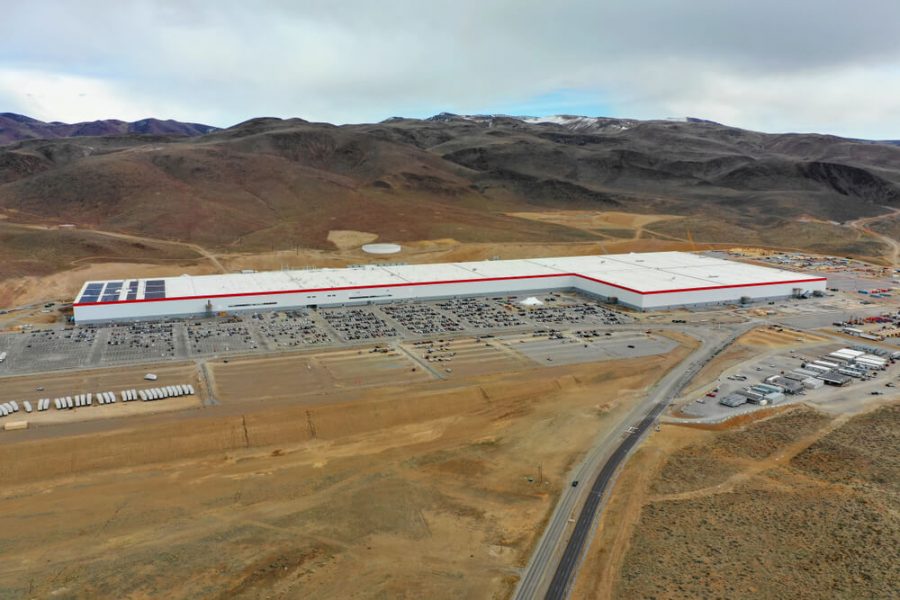
Elon Musk’s Tesla is the industry leader not only for electric cars but for autonomous driving. Tesla also produces its batteries at Gigafactories (manufactured by Panasonic), innovating on battery technology while manufacturing batteries to use in its own products. Lithium-ion batteries are the preferred choice for Tesla, and these batteries have been chosen for some very specific reasons.
The Leading Choice
Li-ion has higher power, small size, and this power density allows them to store more energy for use in electronic devices and components from smartphones to transmitters. The popularity of li-ion batteries has also driven the metals used to make the batteries (copper and nickel) to greater popularity, taking the mining companies extracting and processing them along for the ride.
Miners To The Rescue
Musk knows this and has even publicly called on nickel miners to bring him a clean production plan to meet his companies’ demands now, and in the future. A few companies have answered the call, and Tesla will have its eye out for more options, but there may be a key player on the other side of the planet that Elon Musk may have overlooked: Tsingshan Holding Group.
Supply and Demand Concerns
The trade war between China and the US had investors and the mining sector generally concerned, but with that largely behind us, nickel miners can focus on the road ahead. That road, it seems, is paved with the opportunities of the electric demand driver with seemingly limitless horsepower.
To meet the demand of battery makers and electric car manufacturers like Tesla and traditional car companies entering the space, nickel mining is ramping up, and some of the biggest international players like Tsingshan are entering the game.
A Behemoth Enters The Ring
It’s not clear who David is in this scenario, but one thing is certain: Tsingshan Holding Group is Goliath. The company is already a major miner and processor of nickel ore, converting it to nickel pig iron to feed its stainless steel mill. While maintaining its stainless steel projects, Tsingshan will also use a different processing route for their proposed 50,000-tonne per year battery-materials plant. Tsingshan will supply the nickel and process it to nickel hydroxide intermediates made to be converted to nickel sulphate. This is the final nickel form of choice for lithium-ion battery makers.
Supply Changes Mean Price Changes
Having such a major player enter the nickel space at this scale will spell trouble not just for nickel miners around the world and particularly in the Asia-Pacific region, but nickel prices in general. Tech companies and battery manufacturers will continue to scoop up more nickel every year, so what remains to be seen is whether supply can ever really outstrip the massive and exponentially increasing global demand for nickel.
Other Risks Loom
Research into lithium-ion batteries and the underpinning technology is another main risk to nickel prices and producers in the coming years. Researchers at the Georgia Institute of Technology are looking into new cathode and electrolytes to replace the expensive metals and traditional liquid electrolyte with lower-cost transition metal fluorides and a solid polymer electrolyte, cutting the need for transition metals like cobalt and nickel out of the process.
Typically, the transfer of lithium ions between an anode and cathode (made of lithium), is facilitated by transition metals such as cobalt, nickel, and manganese. This new metal fluoride and solid polymer electrolyte system would reduce the need for those metals, cutting into the industry’s plans.
The Future Approaches
The research conducted now aimed at developing new and improved battery technologies may bring innovations that change the needs of the battery manufacturing industry and the technology industries that buy so many of their products. Electric car manufacturers like Tesla will continue to look for the best options for their cars, the technology in them, and their bottom lines, and if a better, denser, and long-lasting battery technology presents itself, then the industry is likely to shift in that direction.
For now, the industry, traders, and investors are waiting to see how things play out on the research side as new technologies continue to be researched and eventually developed for use. In the meantime, Elon Musk may want to look into Tsingshan Holding Group if he hasn’t already; he might just find the reliable nickel mining and processing partner he’s been looking for.
The above references an opinion and is for information purposes only. It is not intended to be investment advice. Seek a licensed professional for investment advice. The author is not an insider or shareholder of any of the companies mentioned above.
If you would like to receive our free newsletter via email, simply enter your email address below & click subscribe.
CONNECT WITH US
Tweets
Tweet with hash tag #miningfeeds or @miningfeeds and your tweets will be displayed across this site.
MOST ACTIVE MINING STOCKS
Daily Gainers
 Kermode Resources Ltd. Kermode Resources Ltd. |
KLM.V | +100.00% |
         |
ADD.V | +50.00% |
   |
ADD.AX | +50.00% |
         |
SXL.V | +33.33% |
         |
GGL.V | +33.33% |
         |
CASA.V | +30.00% |
         |
RUG.V | +25.00% |
         |
RKR.V | +25.00% |
         |
NOW.V | +20.43% |
   |
TAS.AX | +20.00% |
Articles
FOUND POSTS
Chile’s Year-End Copper Windfall Signals Mining Recovery
January 10, 2025
Oman Resumes Copper Exports After Historic 30-Year Gap
January 7, 2025

 Follow us on Twitter
Follow us on Twitter Become our facebook fan
Become our facebook fan







